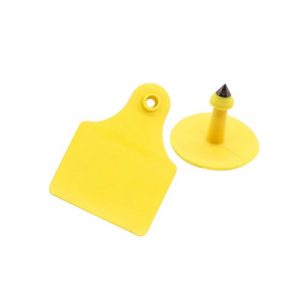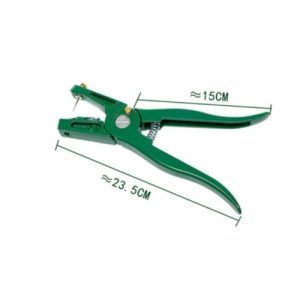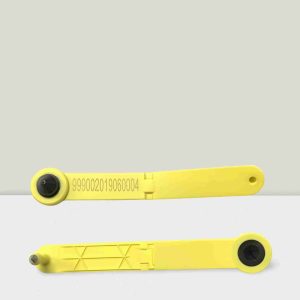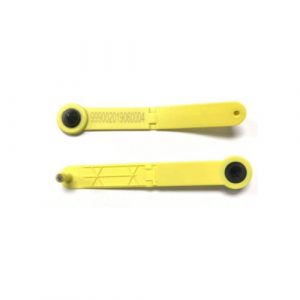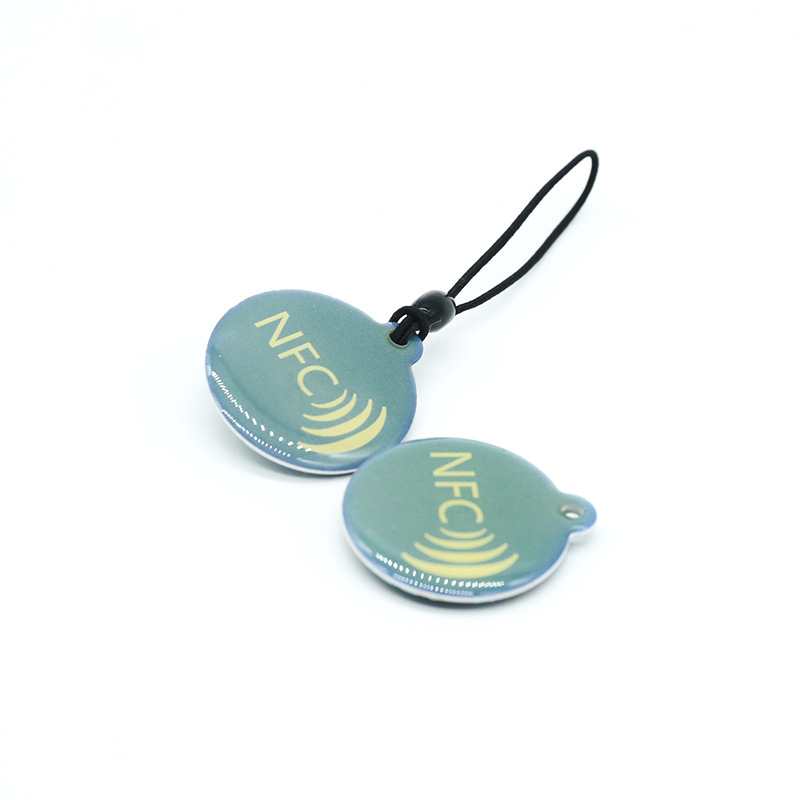When it comes to efficient livestock management, RFID ear tags have become a game-changer. These small, electronic tags are equipped with RFID (Radio-Frequency Identification) technology, which offers a range of benefits for farmers and ranchers. In this comprehensive guide, we’ll explore the world of RFID ear tags and help you understand why choosing the right ones for your livestock is crucial.
Introduction
RFID ear tags are not just ordinary tags; they are a vital component of modern livestock management. These small devices use radio-frequency signals to transmit data, allowing farmers to track and monitor their animals with precision. In this article, we will delve into the world of RFID ear tags, their benefits, and how to choose the right ones for your livestock.

Benefits of RFID Ear Tags
- Enhanced Livestock Tracking
RFID ear tags make it easier to keep tabs on each animal, reducing the chances of losing track of any member of your herd. - Data Collection
These tags provide a wealth of data, including an animal’s health, movement patterns, and feeding habits, which can be invaluable for management decisions. - Efficiency
RFID technology allows for quick and easy scanning, significantly reducing the time and labor needed for tasks like feeding and medical check-ups.
Selecting the Perfect RFID Ear Tags for Your Livestock
When it comes to managing livestock efficiently, RFID ear tags have become an indispensable tool for farmers. These tags not only help in tracking individual animals but also contribute significantly to the overall organization and management of the herd. However, with a plethora of options available in the market, choosing the right RFID ear tags can be a daunting task. To simplify this process and ensure that you make the best decision for your livestock, consider the following factors.
Material Matters: Opting for Durability and Comfort
The material of RFID ear tags plays a crucial role in their longevity and effectiveness. Look for tags made from durable materials such as plastic or silicone, which can withstand harsh environmental conditions and frequent wear. Additionally, consider the comfort of the tags for your livestock. Tags that are lightweight and designed with smooth edges will minimize discomfort and reduce the likelihood of animals tampering with or removing them.
Size and Design: Ensuring Proper Fit and Readability
The size and design of RFID ear tags are essential for ensuring proper fit and readability. Choose tags that are appropriate for the size of your livestock, ensuring that they are neither too large nor too small. Tags that are too big may cause irritation and interfere with the animal’s movements, while tags that are too small may be difficult to read or prone to damage. Opt for designs that facilitate easy scanning and reading, such as those with clear, visible numbers or codes.
Compatibility and Functionality: Seamless Integration with Management Systems
Before making a purchase, ensure that the RFID ear tags are compatible with your existing management systems. Whether you use a standalone RFID reader or an integrated software solution, compatibility is crucial for seamless data collection and analysis. Additionally, consider the functionality of the tags, such as memory capacity and data retention capabilities. Tags with ample storage and long-term data retention will enable you to track the complete lifecycle of your livestock and make informed management decisions.
Resistance to Environmental Factors: Withstanding Various Conditions
Livestock are exposed to a variety of environmental factors, ranging from extreme temperatures to moisture and dirt. Therefore, it is essential to choose RFID ear tags that can withstand these conditions without compromising their performance. Look for tags with waterproof and weatherproof properties, as well as resistance to chemicals and UV radiation. This will ensure that the tags remain intact and readable, regardless of the external environment.
Cost-Effectiveness: Balancing Quality and Affordability
While cost should not be the sole determining factor, it is essential to find RFID ear tags that offer a balance between quality and affordability. Consider the long-term benefits and savings that durable, high-quality tags can provide, such as reduced replacement costs and improved herd management. Compare prices from different suppliers and manufacturers, keeping in mind factors such as warranty, customer support, and additional features.

How to Apply RFID Ear Tags
Proper application of RFID ear tags is essential for their effectiveness. Here’s a brief overview of the application process:
- Prepare the Tag
Ensure that the tag is properly programmed with the necessary information. - Restrain the Animal
Depending on your livestock, you may need to restrain the animal to attach the tag safely. - Attach the Tag
Follow the manufacturer’s instructions to attach the tag securely to the animal’s ear. It should be snug but not too tight. - Test the Tag
After applying the tag, test it to ensure that it’s transmitting data correctly.
Maintenance and Data Management
Once your livestock has RFID ear tags, you’ll need to maintain and manage the data they provide. Regularly check the tags for any signs of wear and tear. Also, establish a system for collecting and analyzing the data generated by the tags. This data can help you make informed decisions about animal health, feeding schedules, and breeding programs.
RFID Ear Tags in Practice
Incorporating RFID ear tags into your livestock management can yield impressive results. Farmers and ranchers worldwide have shared their experiences, and the consensus is clear: these tags streamline operations and enhance animal welfare.
Case Study 1: Streamlining on the Farm
John, a cattle farmer, shares his experience: “Once we started using RFID ear tags, our record-keeping became a breeze. We could track each animal’s health, monitor feeding schedules, and even know when a cow was due to calve. It’s made our operation more efficient and profitable.”
Case Study 2: Wildlife Conservation
In wildlife conservation, RFID ear tags play a crucial role. Researchers can monitor and protect endangered species more effectively. The data collected helps identify migration patterns and understand the behavior of these creatures, aiding in their preservation.
Frequently Asked Questions (FAQs)
Q: Are RFID ear tags safe for animals?
A: Yes, RFID ear tags are designed to be safe and comfortable for animals. They do not harm or cause discomfort.
Q: Can RFID ear tags be reused?
A: Some RFID ear tags are designed for single use, while others are reusable. It depends on the specific tags and their intended purpose.
Q: How long does an RFID ear tag’s battery last?
A: The lifespan of an RFID ear tag’s battery varies depending on the type of tag and its usage. Some can last several years, while others may have shorter lifespans.
Q: Are there privacy concerns associated with RFID animal tracking?
A: Privacy concerns can arise in the context of wildlife tracking. It’s essential to follow ethical guidelines and data protection regulations.
Q: What are the costs associated with implementing RFID animal tracking?
A: The costs vary depending on the scale of implementation and the type of RFID ear tags used. In the long run, RFID technology can lead to cost savings.
Conclusion
In conclusion, RFID ear tags have revolutionized the way we manage livestock. Their benefits in terms of tracking, data collection, and efficiency are invaluable to farmers and ranchers. When choosing the right RFID ear tags, consider factors like material, size, read range, and durability. Proper application and maintenance are essential for maximizing the benefits of these tags in your livestock management.
